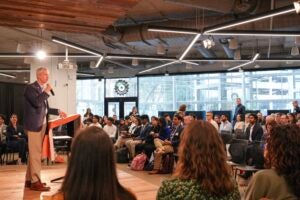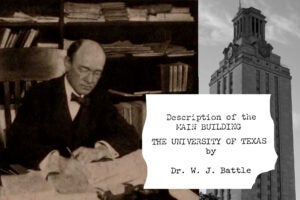Analysis of the surprising defeat of House Majority Leader Eric Cantor included the notion, as one county GOP chair told the Washington Post, that voters “hadn’t seen him”- that Cantor had lost touch with his constituency after a long tenure in office and a greater focus on inside-the-Beltway politics than on his district. Cantor would not be the first to face accusations of being “out of touch” with his electorate, and his defeat raises important questions about how elected officials at all levels should engage their constituents after elections.
It is never much trouble, after all, for a voter to get a candidate’s attention during a campaigncandidates aspire to connect personally with as many voters as possible, to act concerned about the issues that concern those voters, and to promise to work hard for them while in office. But the “radio silence” that many officeholders adopt after taking officeparticularly at the state and national levelscan leave many voters feeling unrepresented.
At the local level, mayors and public administrators in cities across America have begun to realize that those affected by a City Council’s decision should be able to affect those decisions. Many of these cities have moved past a bygone era in which citizens are asked to wait around for hours to speak for a mere three minutes on a topic of great concern to them, the fate of which was likely decided much earlier. The mere opportunity to deliver a speech publicly appeals to an infinitesimally small portion of the public, and an even smaller percentage can give up the time needed to do soor sees any value in it.
So, many cities have chosen to take innovative approaches to engaging the public in dialogue well before making any decisions about policy or budgeting. In cities like New York and Chicago, the public has been invited to “participatory budgeting” processes in which they propose and then vote on specific projects to receive city funding. In cities like Austin, citizens can attend a meeting in person or watch the same meeting on television or online and participate via phone, text message, or social media, producing an audience of several thousand that represents a broader cross-section of the public than would otherwise be possible. Cities like Philadelphia have even hosted games to get citizens to help with community planning. Youth councils have sprung up all across the country, from Oregon to Virginia, to give official voice to an often ignored pre-voting or newly-voting population.
Meanwhile, few members of Congress deviate from the “town hall” medium of engagementpositioning themselves in front of a verbal firing squad at the front of an auditorium only to face a barrage of often hostile questions that leave them defensive and silence those who want to have a serious conversation. The shortcomings of this format became clear in the lead-up to the passage of the Affordable Health Care Act, in which many members of Congress came home to angry crowds, some of which they simply ignored or evaded and others of which they counter-attacked.
Given Congress’s recess schedule and its use of social media, politically advantageous opportunities exist for more robust engagement between members and their constituentsboth in-person and online. Members of Congress could ask their constituents directly how to handle issues at hand. Certainly, constituents could call or write, but in the absence of any invitation to provide input or personalized response, the exercise could seem futile. Beyond that, it limits opportunities for dialogueboth between an elected official and constituents and among those same constituentsto move beyond talking points into a deeper understanding of viewpoints and an exploration of possible areas for compromise.
In its “core values,” the International Association for Public Participation argues that governments should “provide participants with the information they need to participate in a meaningful way,” and “communicate to participants how their input affected the decision.” In the absence of an invitation to participate after casting a ballot, or the means to do so, or a sense of why it would matter, incumbent officeholders could increasingly face a fate like House Majority Leader Cantor’stossed from office for being unengaged with voters.
Larry Schooler is a senior fellow at the Annette Strauss Institute for Civic Life at the University of Texas.
A version of this op-ed appeared in the Fort Worth Star Telegram and the Austin American Statesman.



